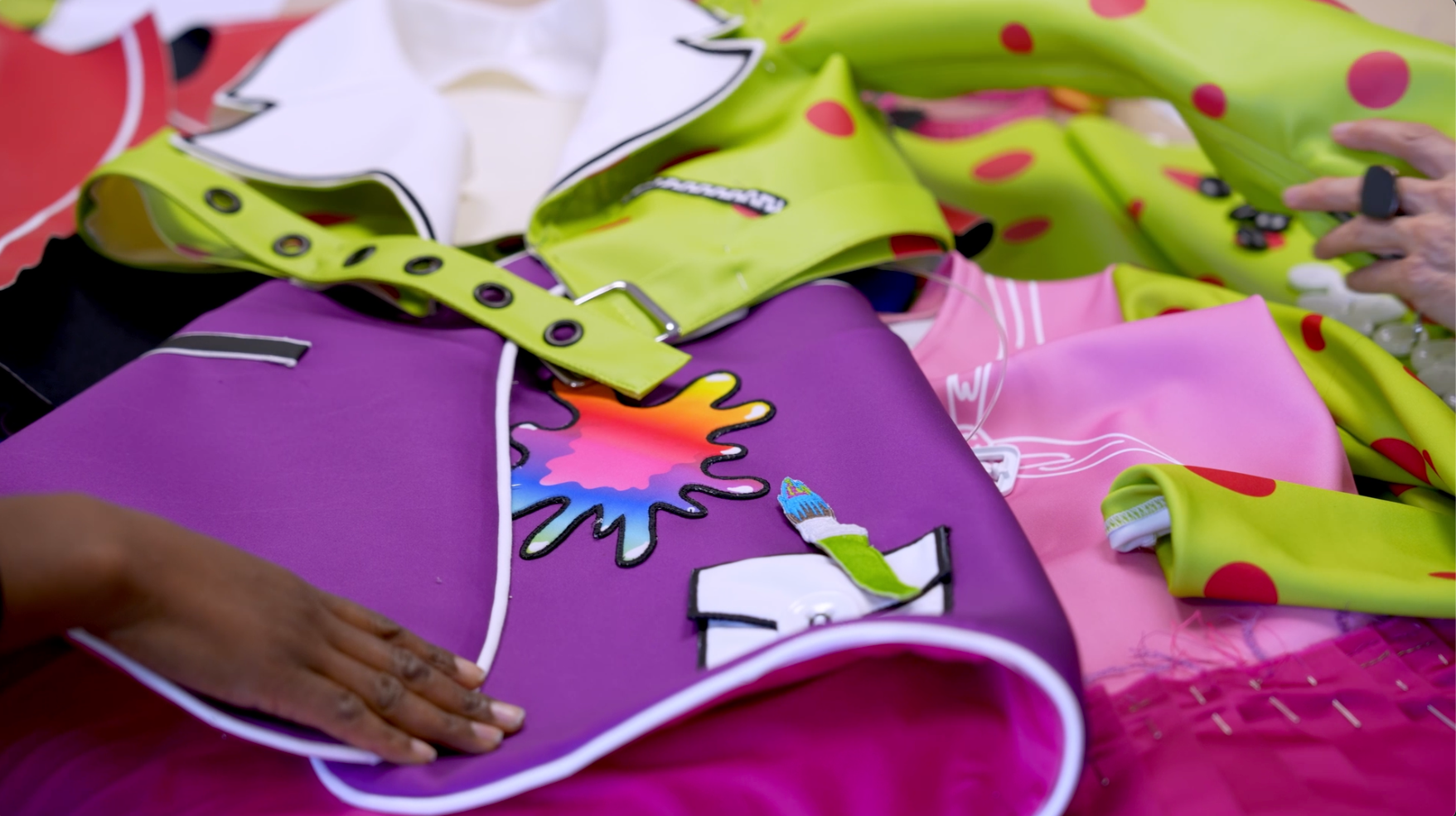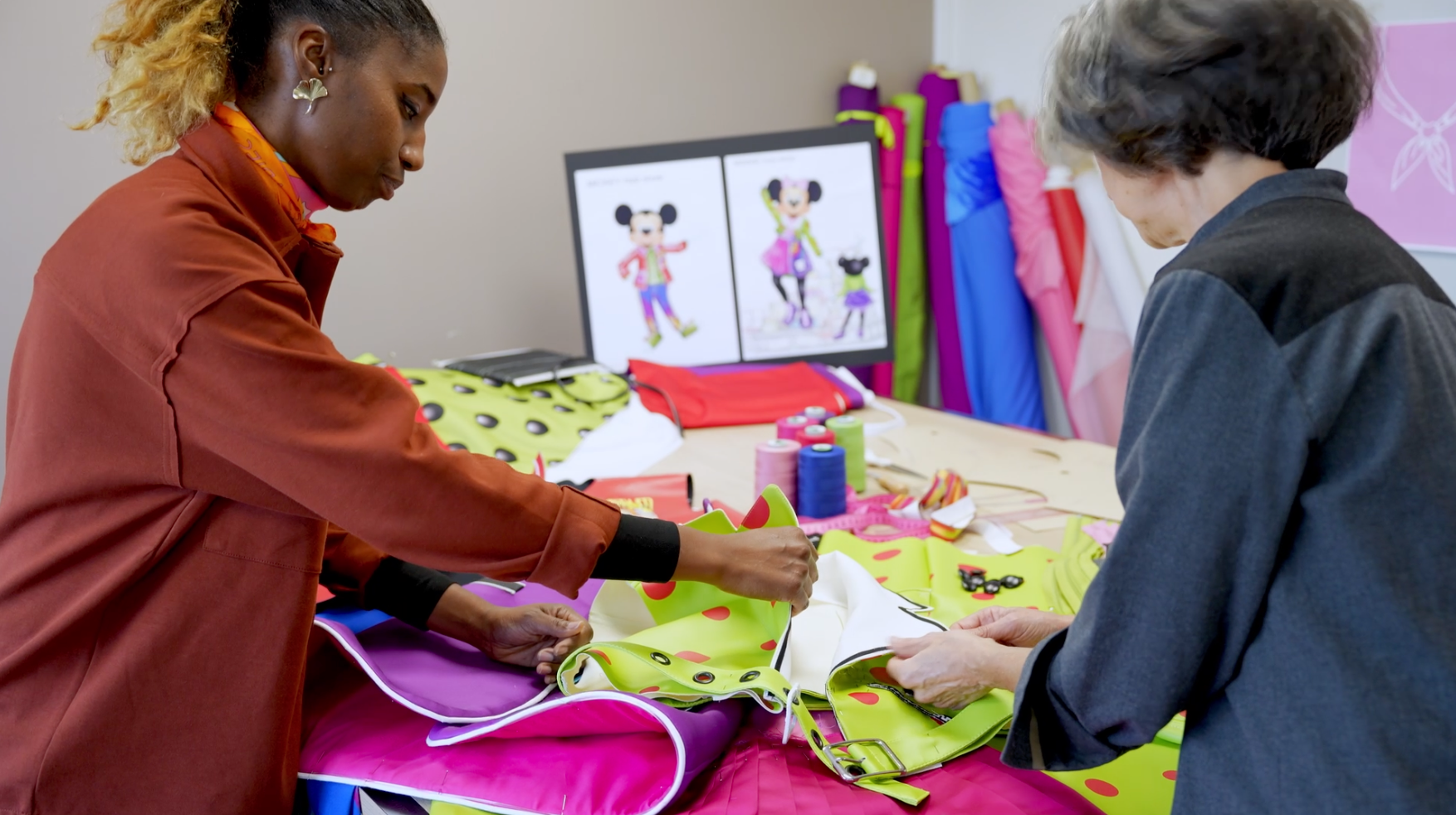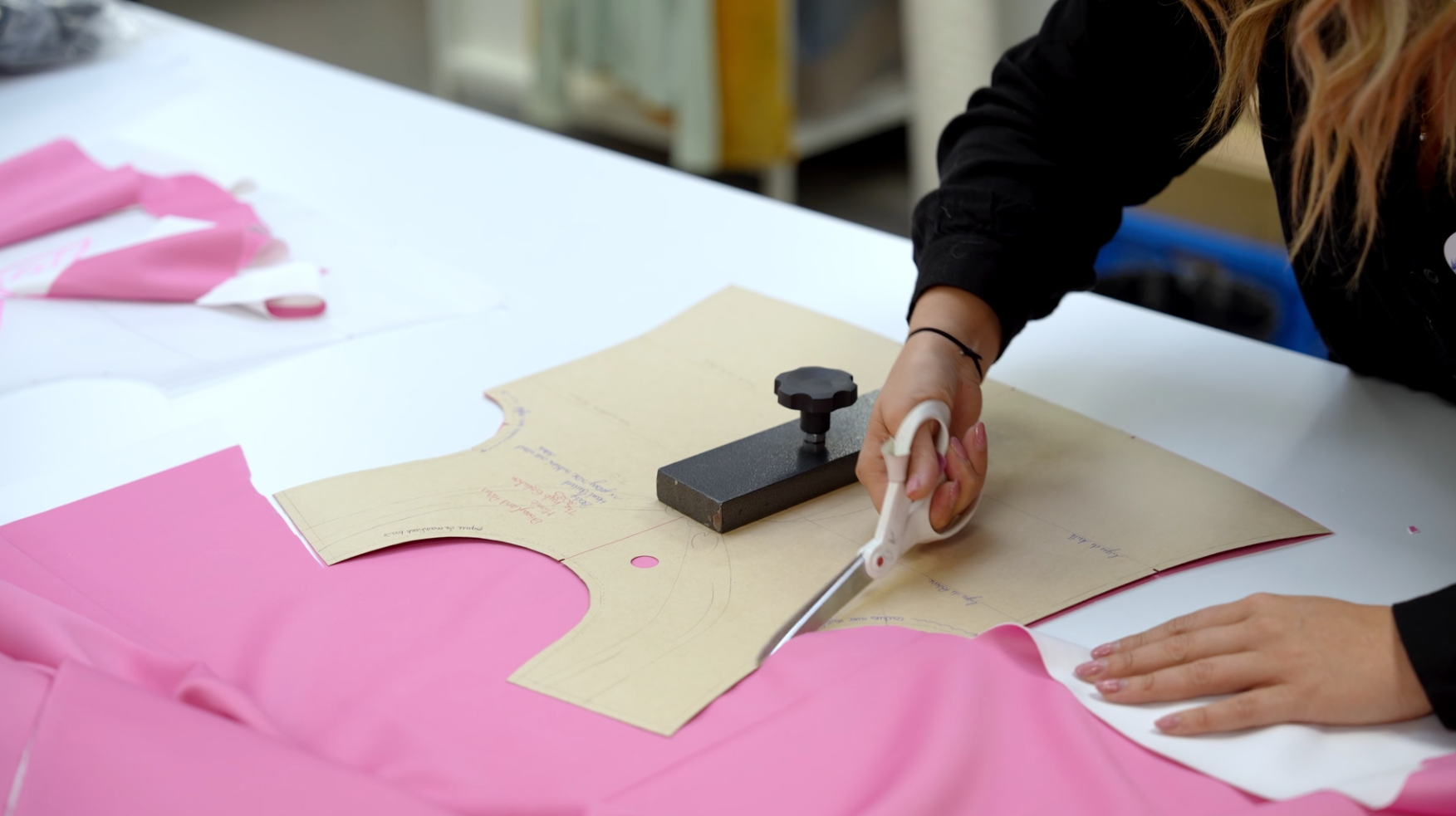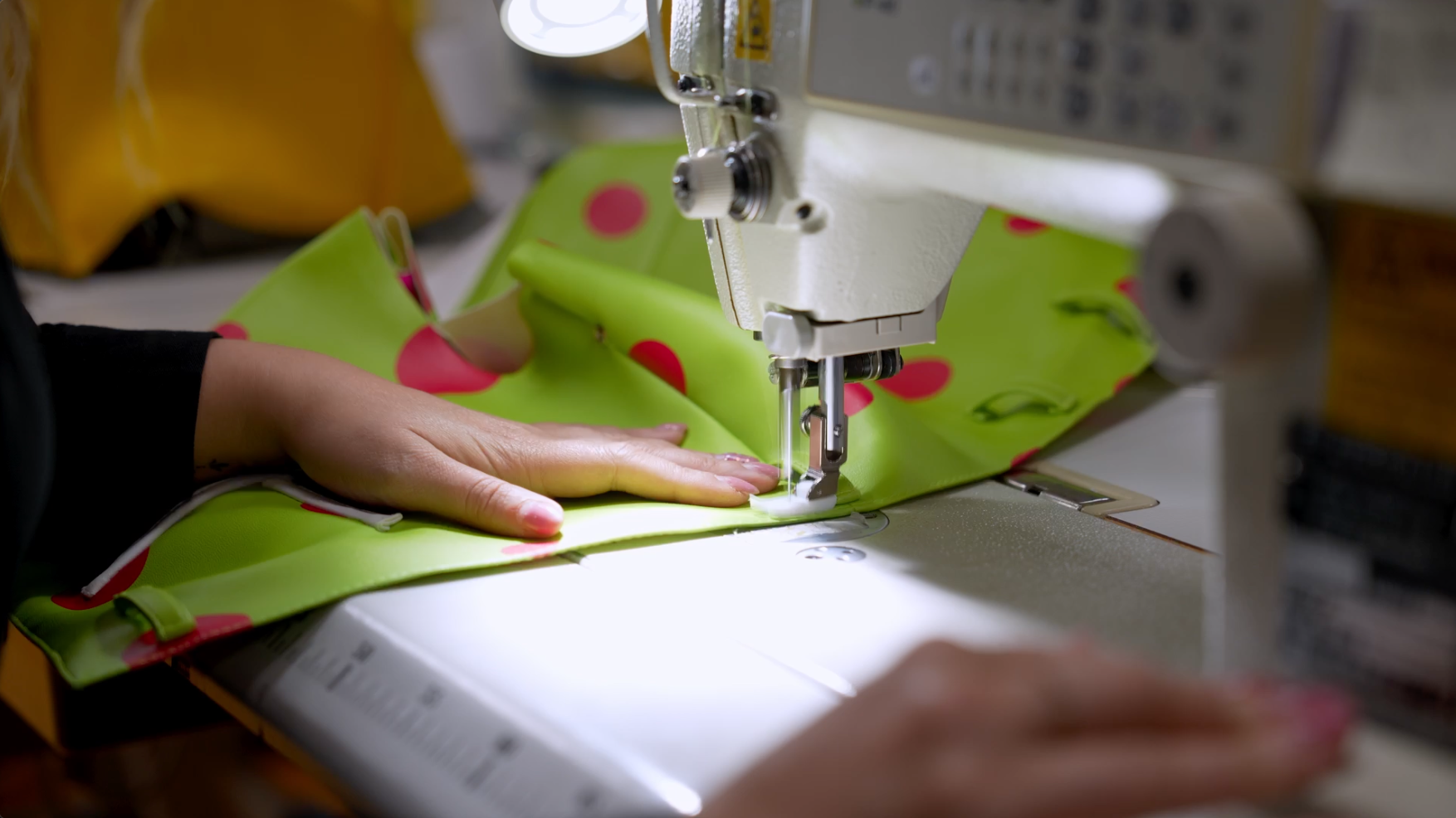Go behind the scenes of the show: A Million Splashes of Coulour performed daily at Disneyland Paris. A focus on the creation of the show’s costumes, with interviews with Isabelle LEMARIE, Malika SIF – Costume Designer and Marie-Odile DENISET – Costume Maker at Disneyland Paris.

Hello Isabelle Lemarie, can you tell me about your role in Disney Symphony of Colours? How did you work with Malika and Marie-Odile?
My role was to imagine and create the new costumes for Mickey, Minnie, Donald, Daisy and Goofy for the new show A Million Splashes of Colour. As soon as I received the request, I began researching iconography and images, while thinking about materials. Once the designs are complete and validated, I present the models to Marie-Odile, Costume Maker, to choose the costume pieces to be made, the materials we’ll use and the colors we’ll choose.
How did the costumes come about? What was the initial brief?
The initial brief focused on three periods: the past, present and future through Disney stories and characters, and the transition from black and white to color in a drawn, graphic style. To create the character costumes, I wanted to work with color, graphic elements and an optical illusion effect to anchor the costumes in a cartoon universe. For example, Goofy is a painter and wears a jacket with fake paintbrushes and traces of paint, while remaining close to his slightly awkward personality.

What did you draw your inspiration from? Did you imagine several designs before arriving at the final ones? Did inspiration come easily?
I was inspired by floats, with their drawn, cartoonish look, with drips and splashes of paint. I was also inspired by Disney stories and certain fashion designers who also use this optical illusion effect in their creations. For example, we find false zips, pleats and splashes of paint on the costumes, while keeping strong elements like the emblematic polka dots on Minnie’s skirt by reworking their size. In terms of creation, we present several designs before arriving at the final mock-up for each costume.
Are there any hidden elements in the costumes?
In the costumes of the characters we find many details like splashes, false pleats or zips, sometimes real and sometimes false given by an optical illusion. These trompe l’oeil elements were created and realized by our computer graphics designers, based on my sketches. They create these elements using digital files, which are then sublimated by our supplier after validation. The sublimation technique is a specific textile printing method that enables us to reproduce all types of visuals while respecting the chosen colors. For example, the pleats on Daisy’s skirt are fake, whereas they are real on Minnie’s skirt.

Malika, can you tell me about your role in Disney Symphony of Colours? How did your collaboration and exchanges with Isabelle and Marie-Odile come about?
My role was to imagine and create the costumes for the dancers in the new show A Million Splashes of Colour.
How did the costumes come about? What was the initial brief? I imagine you had a lot of discussions with the other artistic teams? What did you draw inspiration from? Did you imagine several designs before arriving at the final ones? Did inspiration come easily?
After getting to know the story of the show, Natalia Beliaeva, the director, described precisely what she imagined the dancers’ costumes would look like. From there, I drew a lot of my inspiration from the floats and their graphic effect in black and white with the addition of color. The idea was to achieve the same effect on the costumes, with a real play of contrasts between black, white and color on top. I therefore made several mock-ups during the creative phase, following the creative evolution of the show before arriving at the final result.
Did you incorporate any special elements into these costumes?
Indeed, the costumes feature elements emblematic of the Walt Disney universe. I wanted to achieve this “sheet of paper” effect for the costumes, while keeping the dancers comfortable. The costumes also tell a story, as I drew inspiration for the black lines from the signatures of our Disney characters and Walt Disney to help tell the story of the show. The costumes allow the dancers to embody artists who, through their blank canvas, will be transformed into a living work of art, creating a visual symphony to captivate the gaze of our visitors. Each dancer becomes a living palette, representing the beginning with black lines and the future with color.

Finally, Marie-Odile, can you explain your role in the Disney Symphony of Colours? How did you work with Malika and Isabelle?
My role was to oversee the production of the costumes, the choice of materials and liaise with our suppliers. I also follow the evolution of the concept, and the designs and inspirations of the costume designers.
From the first drawings to the launch of the show, how long did it take to develop these costumes?
From the first drawings to the launch of the show, costume development took 7 months.

Does the making of these costumes involve a particular challenge, a particular technique, an innovative process or one that’s different from what we’re used to in our shows? Can you tell us about the choice of materials and patterns?
When designing costumes, ergonomics, aesthetics and functionality are essential. We combined printed, laminated, appliquéd, embroidered, openwork and recycled materials. The result is unique. In choosing materials and patterns, we were inspired by floats and the visual effect of black and white with the addition of color.
Where were these costumes made? Were other workshops involved, apart from the couture workshop?
Some of our character costumes were made in our sewing workshop at Disneyland Paris, while other costumes were produced by external suppliers in France and Europe with whom we’ve been working for several years, and who are familiar with our expectations and needs. These include textile printers, manufacturers, shoemakers, embroiderers and dyers.

